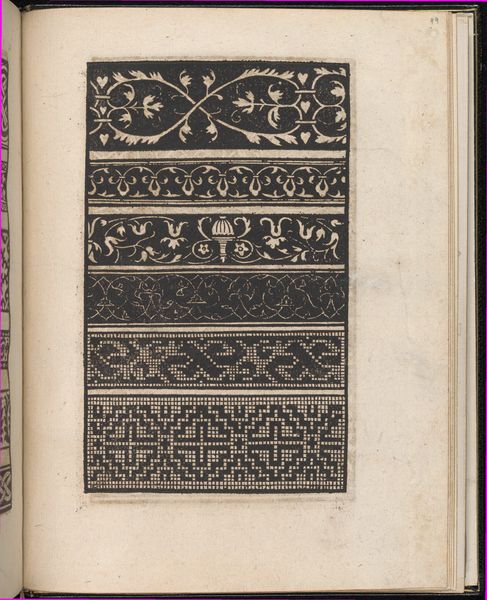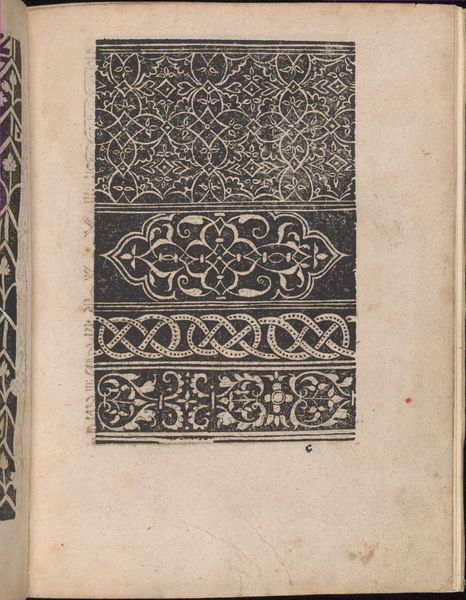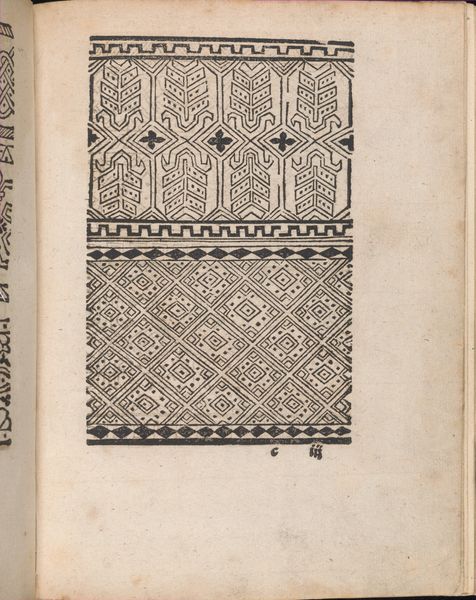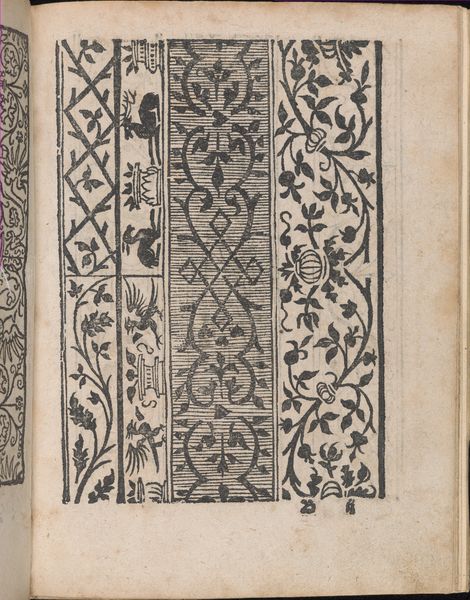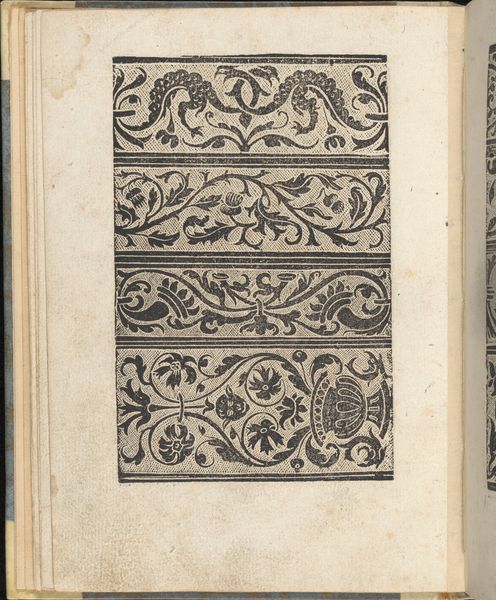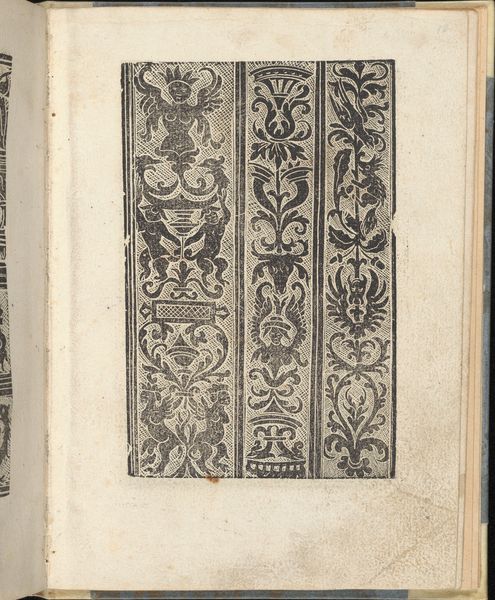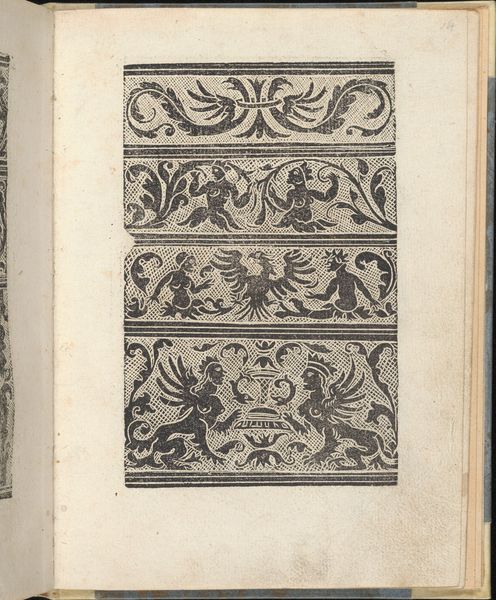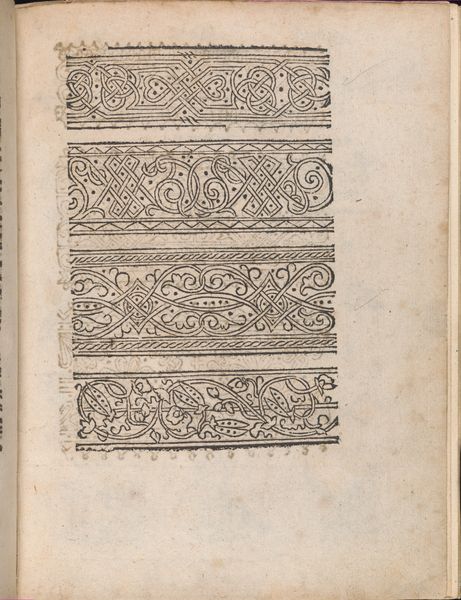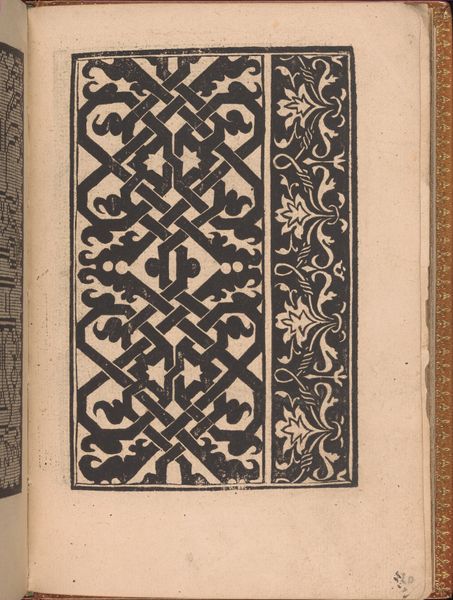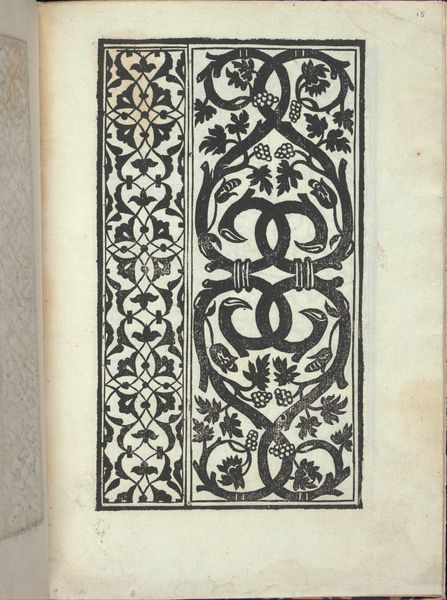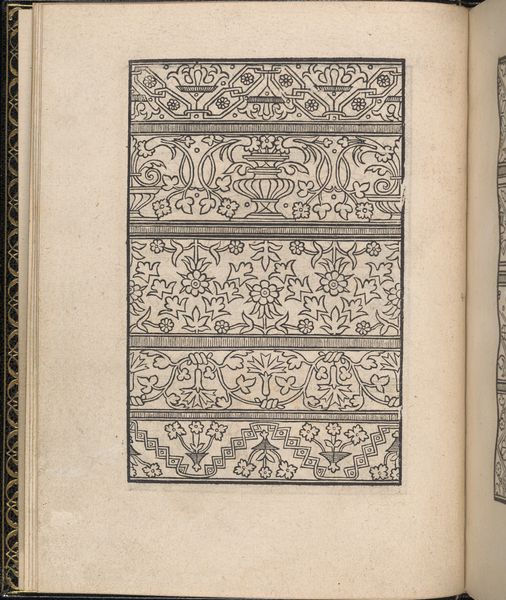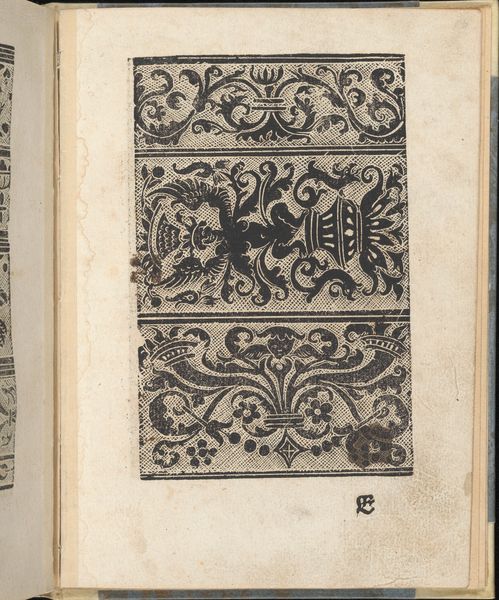
Ein ney Furmbüchlein, Page 14, verso 1520 - 1530
0:00
0:00
drawing, graphic-art, print, woodcut
#
drawing
#
graphic-art
# print
#
11_renaissance
#
geometric
#
woodcut
#
northern-renaissance
Dimensions: 7 7/8 x 6 1/8 in. (20 x 15.5 cm)
Copyright: Public Domain
Curator: This is page 14 verso from "Ein ney Furmbüchlein," a print by Johann Schönsperger the Younger, created sometime between 1520 and 1530. Editor: It feels austere. The black ink creates a striking contrast with the paper, immediately drawing my eye to the linear arrangement of geometric and botanical motifs. Curator: Indeed. It’s a woodcut, which would have allowed for the relatively quick reproduction of patterns for craftsmen—primarily goldsmiths and weavers at the time. These "form books" served as readily available sources of design. Editor: The patterns evoke familiar organic forms, simplified. We have quatrefoils, abstracted floral shapes... Everything is constrained within these precise horizontal bands. It's rigid but not without a certain charm. The limited tonal range also influences how we experience it, relying on rhythm and line. Curator: Look at the subtle shift in symbolism as we move down the page. The top band, with its repeating four-leaf clover motif, hints at luck, perhaps an aspirational pattern for artisans hoping for patronage. Editor: The second band features what looks like formalized floral goblets. And in the third, we clearly see fruiting vines, suggesting fertility and abundance. Each band builds a subtle narrative of aspiration and achievement. Curator: Precisely. In the final band, these intertwining lines could represent a desire for connection, for interweaving success through collaborative work among these artisans. Each element reinforces social cohesion. Editor: So, viewed purely formally, it’s a fascinating exercise in the manipulation of form, repetition, and contrast within tight constraints. It's also indicative of the values assigned to these patterns at the time. Curator: Absolutely. Seeing the art as functional allows us to understand not only how things looked then, but how people hoped and aspired. It gives voice to a different stratum of society during the renaissance. Editor: I find it remarkable how the severity of the medium is softened through the underlying, almost whispered optimism within these bands. Curator: I’ll be thinking of it for a while, its stark patterns, how form becomes, or perhaps reveals, function.
Comments
No comments
Be the first to comment and join the conversation on the ultimate creative platform.
